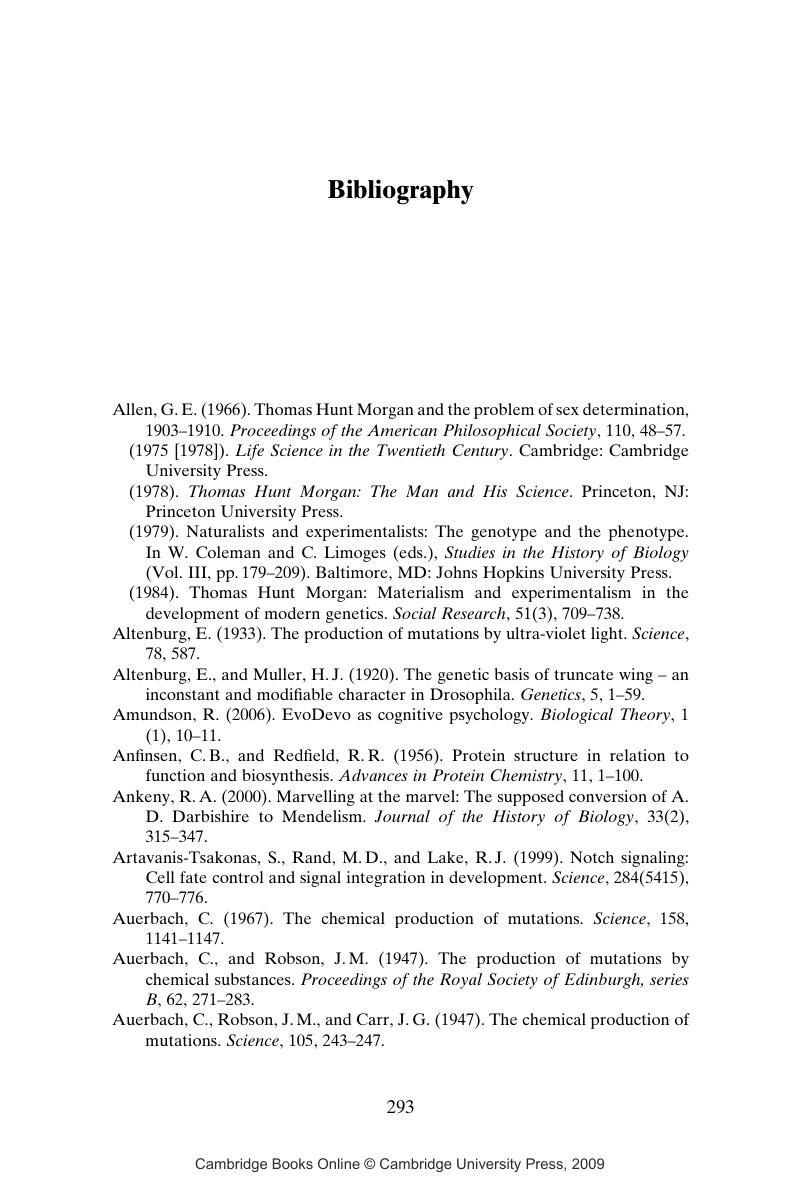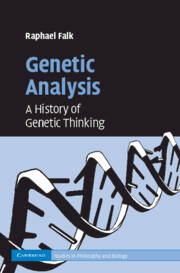Book contents
- Frontmatter
- Contents
- List of figures
- Acknowledgments
- Introduction
- PART I FROM REPRODUCTION AND GENERATION TO HEREDITY
- PART II FAKTOREN IN SEARCH OF MEANING
- PART III THE CHROMOSOME THEORY OF INHERITANCE
- PART IV GENES AS THE ATOMS OF HEREDITY
- PART V INCREASING RESOLVING POWER
- PART VI DEDUCING GENES FROM TRAITS, INDUCING TRAITS FROM GENES
- PART VII WHAT IS TRUE FOR E. COLI IS NOT TRUE FOR THE ELEPHANT
- Concluding comments
- Bibliography
- Index
- References
Bibliography
Published online by Cambridge University Press: 07 August 2009
- Frontmatter
- Contents
- List of figures
- Acknowledgments
- Introduction
- PART I FROM REPRODUCTION AND GENERATION TO HEREDITY
- PART II FAKTOREN IN SEARCH OF MEANING
- PART III THE CHROMOSOME THEORY OF INHERITANCE
- PART IV GENES AS THE ATOMS OF HEREDITY
- PART V INCREASING RESOLVING POWER
- PART VI DEDUCING GENES FROM TRAITS, INDUCING TRAITS FROM GENES
- PART VII WHAT IS TRUE FOR E. COLI IS NOT TRUE FOR THE ELEPHANT
- Concluding comments
- Bibliography
- Index
- References
Summary

- Type
- Chapter
- Information
- Genetic AnalysisA History of Genetic Thinking, pp. 293 - 320Publisher: Cambridge University PressPrint publication year: 2009



